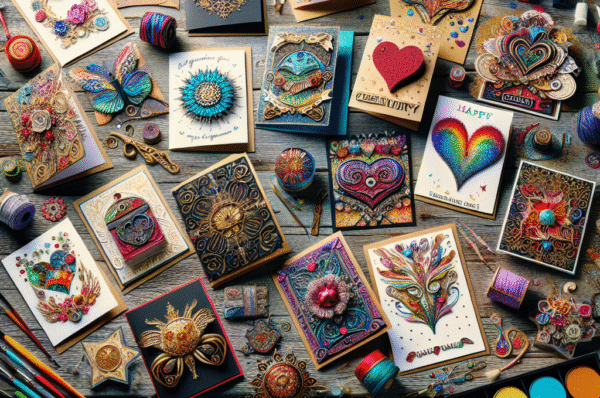In the sprawling landscape of hobbies and pastimes, few have experienced a resurgence quite like trading cards. After years of dormancy, driven by a wave of nostalgia, the trading card scene is undergoing a vibrant renaissance, captivating old fans and newcomers alike. From the dusty attics filled with forgotten collections to the bustling online marketplaces, the revival of trading cards highlights a sweet blend of nostalgia, community, and commerce.
The Roots of the Trading Card Phenomenon
The origins of trading cards date back to the late 19th century, primarily as promotional items for products such as tobacco. However, it wasn’t until the mid-20th century that they became a significant part of popular culture, fueled by classic baseball cards and the advent of collectible card games (CCGs) like Magic: The Gathering in the 1990s. These cards sparked a frenzy that resonated well into the 2000s, only to experience a decline due to digital entertainment and shifting interests.
Yet, like a classic album rediscovered, trading cards have seen a striking revival. This renaissance has been catalyzed by several key factors.
The Power of Nostalgia
Nostalgia is a powerful driving force behind the current trading card boom. As millennials and Gen Z reminisce about their childhood, many are re-engaging with the hobbies they cherished. Whether it’s the thrill of opening a pack of cards, the excitement of building a full collection, or the memory of competing with friends, these experiences resonate deeply.
The surge of interest in retro brands and vintage collectibles has helped to fuel the market. Iconic trading card games, sports cards from yesteryears, and even Pokémon cards are once again fetching sky-high prices, reminding collectors of their youth and sparking new interests in younger generations who may not have had access to these items before.
The Influence of Social Media and Streaming
Social media platforms and streaming services have played a pivotal role in the trading card revival. YouTube channels and Twitch streams dedicated to card unboxings, deck-building strategies, and trading card marketplaces have created a vibrant online community. These creators share their experiences in real-time, drawing in millions of viewers and fostering a sense of connection among fans.
Platforms like TikTok have popularized short videos showcasing rare card finds, exciting trades, and educational content about the history and value of different cards. The hashtag #TradingCards has amassed millions of views, turning personal collections into public spectacles and enticing new entrants to explore the world of trading cards.
The Economic Boom: Rare Cards as Investments
The trading card market has transformed significantly, evolving into a lucrative investment landscape. While nostalgia plays an emotional role, the financial prospects have turned many collectors into savvy investors. Rare cards, autographed memorabilia, and first editions have become highly sought after, often selling for hundreds of thousands of dollars at auction.
The COVID-19 pandemic further accelerated this trend, as many people sought at-home entertainment and diversified their investment portfolios. Reports of record-breaking sales for cards — such as a 1909 Honus Wagner baseball card selling for $6.6 million — have made headlines, reinforcing the idea that these collectibles are more than just nostalgic artifacts; they can also be smart financial moves.
Community and Events: Bringing People Together
Another crucial aspect of the trading card renaissance is the sense of community it fosters. Local card shops and events have seen a resurgence, with enthusiasts gathering to trade cards, engage in competitive play, and share stories of their collections. Events like Comic-Con and dedicated trading card conventions serve as melting pots for fans, allowing them to connect in ways that social media alone cannot replicate.
Additionally, online platforms and forums dedicated to trading cards have sprung up, creating inclusive spaces where enthusiasts can share knowledge and connect irrespective of geographic boundaries. These communities act as support systems, nurturing friendships grounded in a shared love of collecting.
The Future of Trading Cards
As we look ahead, the future of trading cards seems bright. While trends may ebb and flow, the core elements of nostalgia, community, and investment will continue to shape the landscape. Trading cards will likely evolve with technological advancements, potentially integrating augmented reality features or blockchain technology to ensure authenticity and provenance.
Moreover, as new generations enter the fold, we can expect innovative formats and concepts to emerge, blending traditional card collecting with modern storytelling and interactive experiences. Just as vinyl records have made a comeback in the music industry, trading cards are poised to reclaim their place in the hearts and hands of a new generation of enthusiasts.
Conclusion
The trading card renaissance is more than just a passing fad; it’s a cultural phenomenon that underscores our intrinsic need for connection, nostalgia, and community. As collectors old and new come together to celebrate this timeless hobby, trading cards are, once again, captivating imaginations and reshaping the landscape of leisure and investment. Whether reminiscing with cherished collections or forging new connections, it’s clear that the world of trading cards is alive and thriving.




